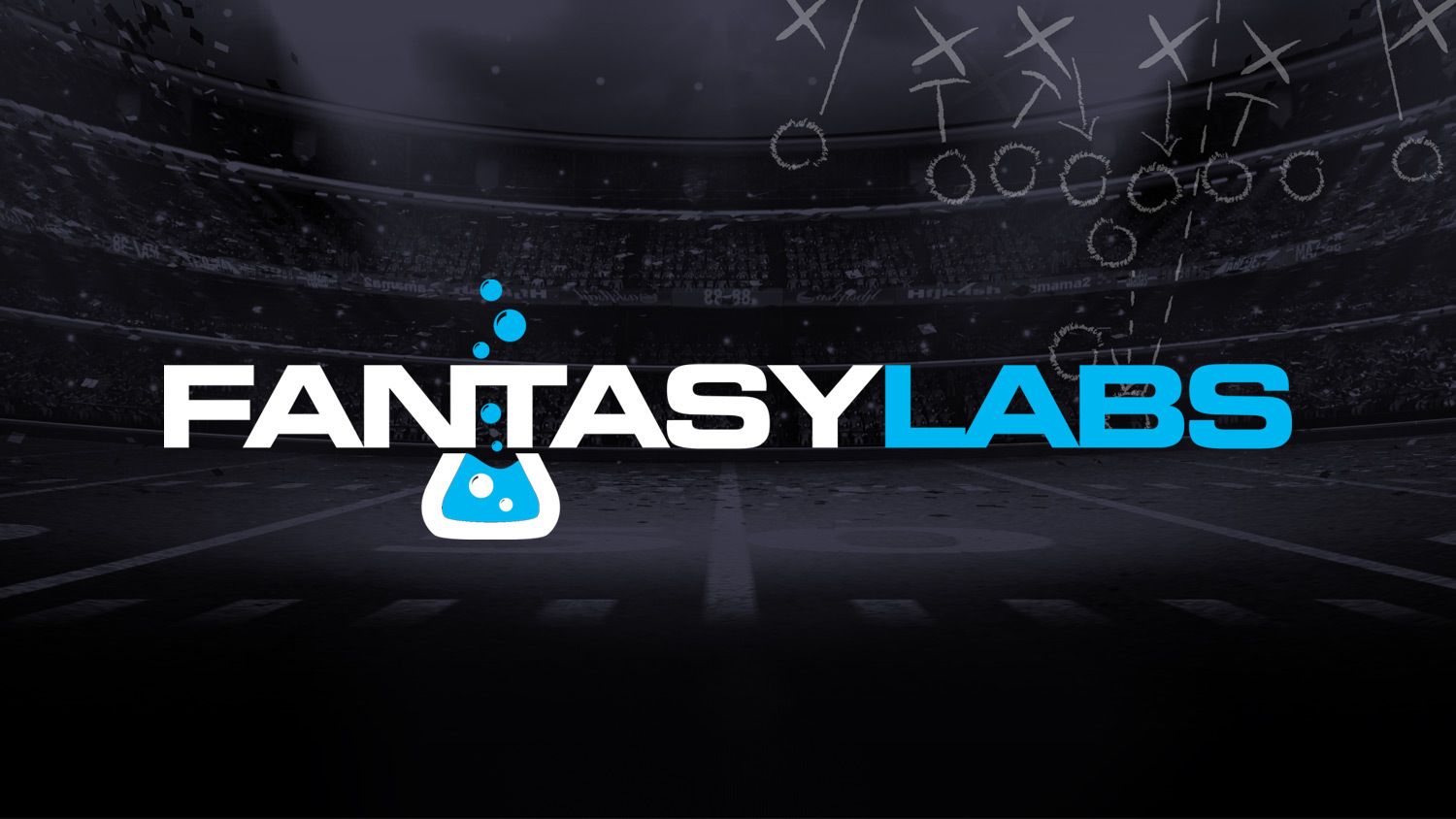The Minimalist Tournament Model
Last week, we debuted the “Minimalist Tournament Model” (MTM) within our FantasyLabs Models. Created by czar of all things DFS (and FantasyLabs Senior Editor) Justin Bailey, it’s designed to isolate individual plays for NFL tournaments. (Which makes it a perfect complement to our Stacks tool, also found within the models). As with all of our Pro Models, we can easily see how scores are determined in the MTM, so let’s take a look.
The Model
Naturally, this model is fairly simple (“minimalist” is in the name after all). Comprising only three metrics, it’s designed to cut right to the point. We’ll take a look at each of them individually, then examine how they work together to identify the best plays for tournaments.
Ceiling Projection
As one might expect, Ceiling Projections are the driving force behind this model. For tournaments, we need players who have the chance to explode for big games. Ceiling Projection makes up 50% of this one. While you could simply optimize by ceiling, sometimes it’s not that easy. That’s where the rest of the model comes into play.
Ownership Percentile
The next most important factor is Ownership Percentile. Powered by our industry-leading Ownership Projections, this allows us to find plays that help us get an edge on our competition. Notice that it’s ownership percentile not projection here. This makes the model more versatile. Absolute projections aren’t as useful as knowing where a player ranks in ownership relative to the rest of the field. Particularly on smaller slates, this is a crucial distinction.
For more on creating your own models, you can check out the tutorial by FantasyLabs’ Ryan Hodge:
Pro Trends Rating
While I’ve waxed poetic about the value of the Trends tool in the past, the MTM makes things easy. Rather than expecting you to build your own trends, it takes into account all of the Trends that our team of DFS professionals have built already. These come pre-loaded into all of our models.
Here’s an example of a wide receiver Pro Trend we have on DraftKings:

Being fully customizable is another benefit to our models. Pro Trends rating makes up the final 25% of the MTM.
How to Use the Minimalist Tournament Model
While the model resembles our Leverage Scores in some ways, it provides an extra wrinkle.
For those unfamiliar, our Leverage Score is a player’s positional rank in Ownership Projection minus their rank in Ceiling Projection. So a player with the third-highest ceiling but the fifth-highest ownership gets a score of positive two. Players whose relative ownership is higher than their ceiling have negative scores.
Rather than just an ordinal ranking, the model quantifies precisely how much better of a tournament play one player is compared to the rest. This is a great tool to let you finish your lineups that you’ve already built, here’s an example:
Say you wanted to build around a Chargers stacks in Week 9 with our Lineup Builder (Justin Herbert ranked No. 3 in the MTM in Week 9). Lock in all of the players you want (or use our Stacks tool to auto-generate the highest-ceiling stacks).
After you have your stack and/or bring-back locked in, click over to the Minimalist Tournament Model. Then you can simply optimize by rating, and it will fill in the rest of your lineup with the best available players based on the model.

That’s just one way to use our new model. You could also use it to seek out one-off plays to plug into your hand-built lineups that need to be finished or use it in our Lineup Optimizer.
Give it a shot this week, and see what you can build!






